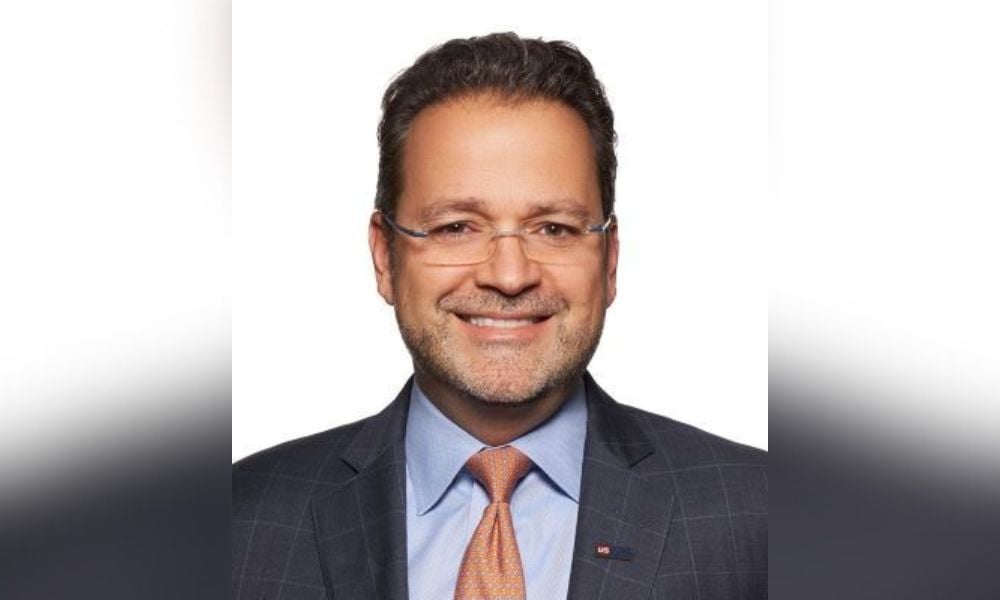
How a chance conversation changed Elcio Barcelos' entire career path

Elcio Barcelos, chief human resources officer at U.S. Bank, has had an impressive career - spanning from sales to operations to managing P&L. However, it wasn't until a chance encounter nudged him in a new direction that he realized his true calling: HR.
Barcelos started his career with a minor in human resources, but it was more of a filler course than a passion. He excelled in sales and client interactions and thought he’d found his niche. However, his opportunity to lead a team of recruiters reignited his love for matching talent with opportunities.
And it wasn't until later in his career after working with an executive coach that Barcelos was urged to consider HR as a true calling.
“I remember the coach saying to me ‘Do you want the good news or the bad news?’” Barcelos tells HRD. “The good news was that he thought I really should be in HR, and not in the business world. The bad news, he said, was that I probably wouldn’t feel like I belonged there for a long time.”
Despite being hesitant at first, he eventually realized that HR was his community of practice and where he truly belonged.
“It’s true, it did take a while for me to click and see HR as my community of practice,” says Barcelos. “But that conversation with that coach really nudged me in the right direction.”
Since then, Barcelos’ influence in the HR sphere has only grown – leading the people function for over 77,000 employees. No mean feat - especially considering the current challenges staring down HR practitioners.
Speaking to HRD about the ongoing issues HR leaders are facing, Barcelos pinpointed three main areas of focus – the first being the changing workforce composition.
“Today's employees have a significant need for a hyper-customized experience, which means that they want to work from anywhere, with the tools and people of their choice,” he says.
Employers are struggling to adapt to these changing expectations, but Barcelos believes that new digital tools, ecosystems, and technology can help create a more agile, employee-centric, and customer-centric experience.
The second issue is the shortage of skills and labour. The ongoing labour shortage across the globe is crippling employers – meaning that holding on to top talent is high on HR’s agenda. According to a report from ManpowerGroup, 75% of employers globally are having difficulty finding the talent they need - the highest in 16 years.
And, as Barcelos says, employers are finding it increasingly challenging to hire the right people with the right skills at the right cost, while still delivering a hyper-personalized experience.
“The solution to this problem lies in maximizing the potential of existing employees by understanding their skills, capacity, and contribution,” says Barcelos.
HR leaders must create a common language of skills between the employee base and the business leaders to articulate the organization's true capacity and potential.
The third challenge identified by Barcelos is reskilling and upskilling employees.
“I have to reskill and upskill our employees over and over again,” says Barcelos. “You have to think of it as almost a factory of skills. It’s about looking for potential and investing in people’s skills. We’re committed to revamping our entire learning ecosystem for the company so that we can then define the skills that we need and upskill our workforce based that.”
From an his standpoint, Barcelos has big plans for the future of HR at U.S. Bank. The company's focus is on three main pillars that are designed to drive growth, ensure HR is delivering against business needs, and enable the business to thrive.
The first pillar is to continuously upskill and prepare the HR organization to meet the demands of the business.
“It’s about looking in the mirror and assessing which skills HR needs,” says Barcelos. “These are the capabilities we need to train in, to work on and to build on in order to become a more fluid organization.”
The second focus is about enabling the business. By that, Barcelos means looking at talent.
“So, ensuring that we're hiring the right person at the right time with the right skills,” he tells HRD. “And ensuring we have the mechanisms to attract the right talent to the organization, so that we have the best learning ecosystem. A big component of that is ensuring diversity, equity and inclusion is front and centre.”
And that focus on DEI will be essential in order to navigate the tight talent market. According to a 2021 study conducted by Glassdoor, 76% of job seekers and employees consider a company's diversity, equity, and inclusion (DEI) practices before applying for a job. In addition, 58% of respondents reported that a diverse workforce was important to them when considering job offers. The study also found that companies with high ratings for DEI practices and a diverse workforce were more likely to attract and retain talent.
The last piece is all about helping the business thrive – including looking at long-term initiatives that will change the whole organizational dynamic.
“One of those will be the skills-centric approach in regard to the talent ecosystem,” says Barcelos. “Another one is around analytics – transitioning to an environment where we're able to measure, monitor, track organizational health. And the third is around an employee-centric approach.
“All companies are really dealing with this right now – looking at how to make things human-centric that helps people to thrive without loosing their identity. We know we need to consider all HR processes – from hiring to benefits to pay to development – to ensure employees feel like they’re valued and that they matter to the organization.”